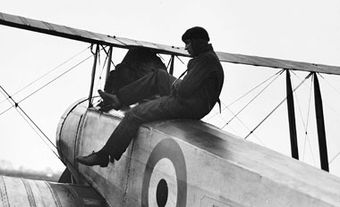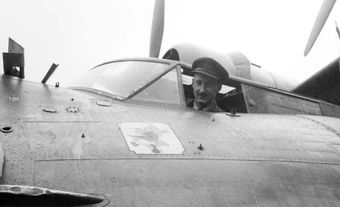John Parker Boyd, American soldier and mercenary (b at Newburyport, Mass 21 Dec 1764; d at Boston, Mass 4 Oct 1830). John Boyd led a rugged life that saw him fight in some of the bloodiest battles of the War of 1812. Courage and strength were his greatest virtues, but other characteristics proved to be to his detriment. His stubbornness secured his defeat at the Battle of Crysler's Farm in 1813, and his rather blind adherence to following orders along with somewhat limited intelligence earned him the nickname "Tippy Canoe," a jab at his conduct at the Battle of Tippecanoe, and his inability to make up his mind if left to his own devices.
Boyd was too young to fight in the American Revolution, though he served in the post-war army after the British defeat on the continent before seeking his name and fortune abroad. It was in the subcontinent that Boyd earned a colourful reputation and his fortunes grew in India, where he served as a mercenary for 19 years. As conflict dogged the various fiefdoms, opportunity for a hired gun and sword were plenty. Boyd sold his skills to several rulers in the Hyderabad region. He raised, trained and led forces of Indigenous soldiers for a variety of local rulers, including, some say, of an Indigenous princess. He returned to the US in 1808, entering the army as a colonel, and would soon earn his battle scars on home turf. He served as brigade commander and second in command to future US president Henry Harrison at the Battle of Tippecanoe in the Indiana Territory in 1811, at the acting rank of brigadier general, against the First Nations forces of Tecumseh's brother Tenskwatawa (this battle is sometimes considered part of Tecumseh's war against the US, culminating in his death in 1813). The battle was a resounding defeat of the Aboriginal warriors.
At the start of the War of 1812, Boyd became a full brigadier general. This appointment had little to do with skill and much to do with the vacancy in higher command created by the death of Peter Ganservoot in July 1812. With that senior rank, Boyd's troubles grew and his reputation began to tarnish. His initial command decisions in the campaigns north of Lake Champlain were muddled and indecisive. By 1813 he'd led a victorious effort with his brigade at the Battle of Fort George, which he captured and then garrisoned. The shocking defeat of the American forces at Beaver Dams, however, forced him to maintain a defensive posture and not build on his own successes.
Despite his success at Fort George, Boyd's name would soon become synonymous with failure. His forces performed poorly as part of Major General James Wilkinson's disastrous campaign to take Montréal. His weakness as a commander was becoming clear but it was not fully revealed before Boyd's bloodiest failure at Crysler's Farm. With the illness of Wilkinson and his second in command, Major General Morgan Lewis, Boyd was in command of the attack on the smaller British forces in 1813. He threw 2600 troops in wave after wave of poorly organized and executed attacks against a well positioned and entrenched British and Canadian force of 1200. The Americans were repulsed repeatedly until the battle could no longer be waged and the Americans withdrew. The failure to bring superior forces to victory ended Boyd's military career. He never held a senior command again and was discharged from the army in 1815. Believing that this move was unjust, Boyd published a personal account of his war efforts that year. It mattered not a whit.
Good in a fight, and capable of leading a regiment or brigade if well directed, John Boyd lacked the qualities that make an effective senior commander: imagination, initiative and a decisive mind.

 Share on Facebook
Share on Facebook Share on X
Share on X Share by Email
Share by Email Share on Google Classroom
Share on Google Classroom


